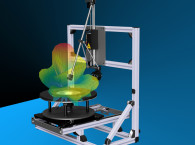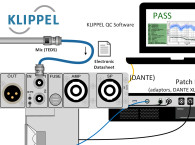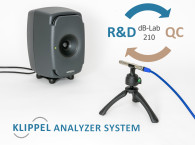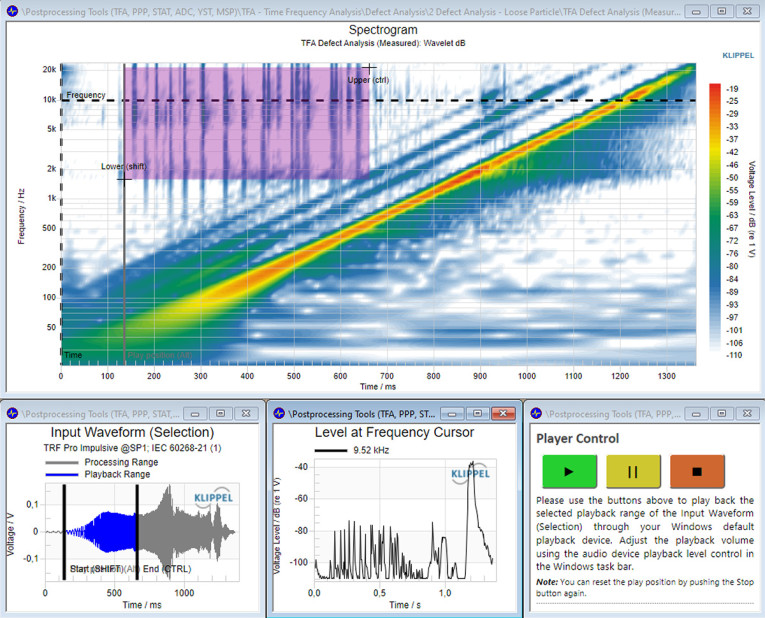
With this software update, the Time Frequency Analysis (TFA) module has faced a major revision and feature update. As a dedicated post-processing tool for the analysis of waveforms in time and frequency domain, the module can import any signal or impulse response generated by the Klippel Analyzer System or imported from a wave file. This powerful post-processing tool now also provides an interactive band-pass filter and playback function for subjective distortion analysis and diagnostics, in addition to the spectrogram analysis options based on STFT, wavelet transform or auditory filter banks with superior time resolution.
Replacing the PLAY module, the TFA module can now load very long wave files in order to obtain signal characteristics and pick a time range for detailed analysis. Overall performance and usability and graphical appearance were also improved.
This software update includes the official release for the QC 3D Spectrogram Limits (3DL) optional modules, an equivalent of the TFA, dedicated to the particular requirements of Quality Control (QC) testing. This add-on for the chirp-based Sound Pressure Task (SPL) of the Klippel QC software uses the auditory filter bank shared with the TFA to generate a time-frequency plot of the measured DUT’s response. The 3DL applies automatically generated “3D Limits” to the spectrogram based on golden reference DUTs to reveal the signature of irregular distortion and abnormal sound caused by loudspeaker defects (Rub & Buzz, loose particles, etc.).
Anything exceeding the limit threshold is highlighted clearly in the dedicated result plots. As an addition to the well-established Rub & Buzz measurements in time domain (impulsive distortion, IEC 60268-21) providing best sensitivity for even the tiniest loose particles, the 3DL module provides new benefits such as detecting abnormal behavior anywhere in the spectrum, identifying external (uncorrelated) disturbances, detailed defect root cause analysis, as well as a simplified Rub & Buzz filter settings. 3DL now also supports ambient noise detection and Production Noise Immunity (PNI), as optional add-on modules for the Klippel QC Framework.

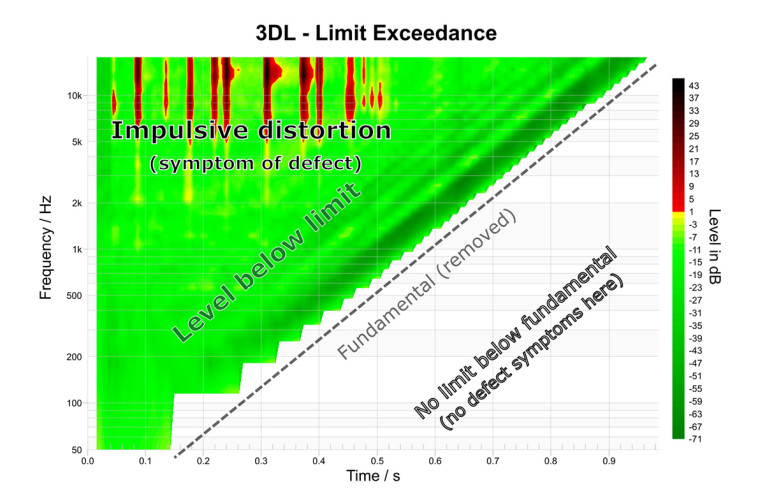
In addition to output-based audio testing according to IEC 60268-21, the QC Stand-alone software now also supports all tasks and features of the QC software that are based on voltage and current measurements, such as Impedance (IMP) for T/S parameter testings and Motor + Suspension Check (MSC) for patented nonlinear parameter testing (e.g., voice coil offset).
This allows creating powerful and yet price-efficient test setups using smart amplifiers with built-in voltage and current sensing, such as the Powersoft Mezzo series. These compact amplifiers are capable of streaming sensor signals via its Dante network interface for professional quality control in cost-sensitive applications.
www.klippel.de





